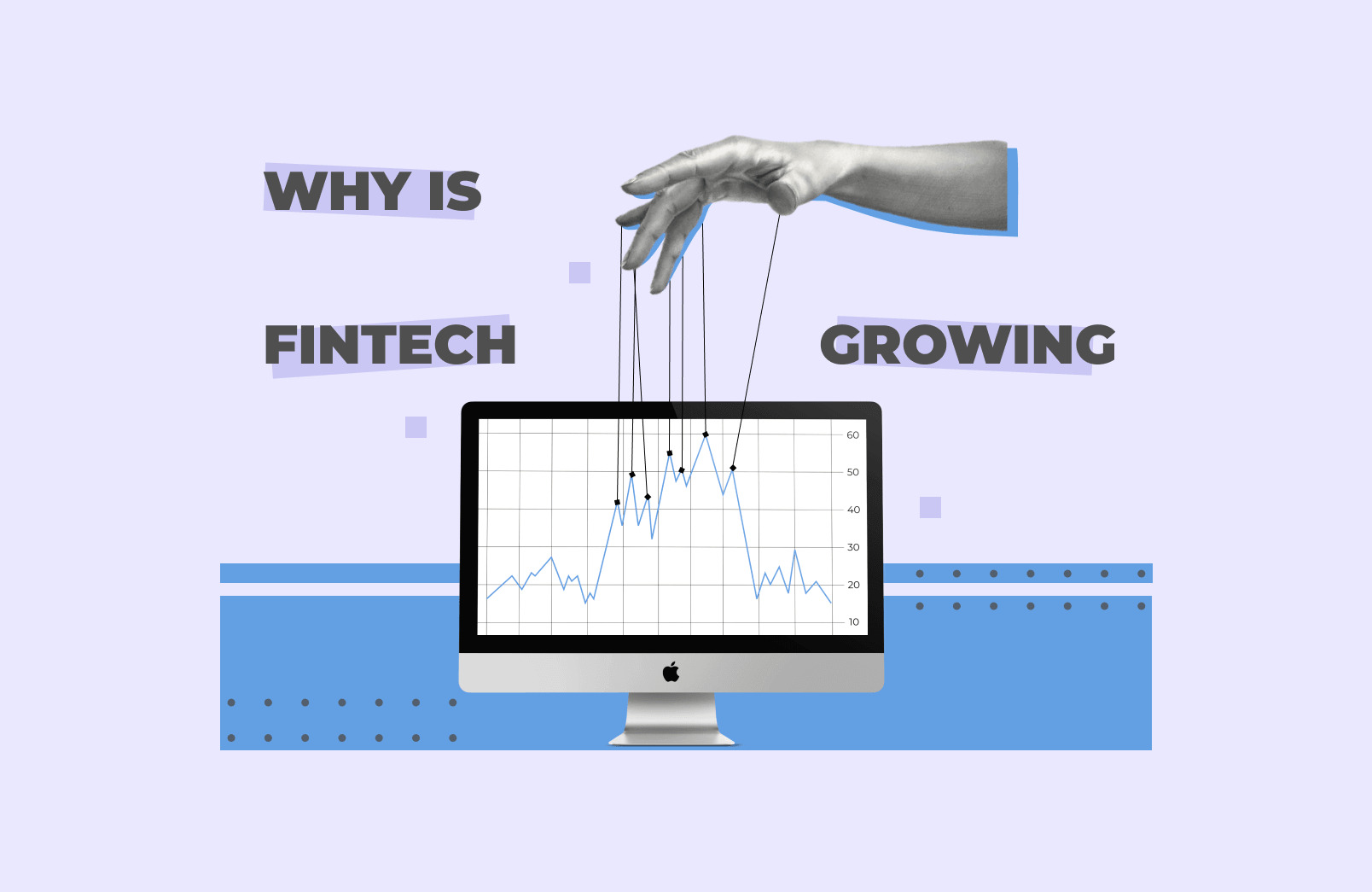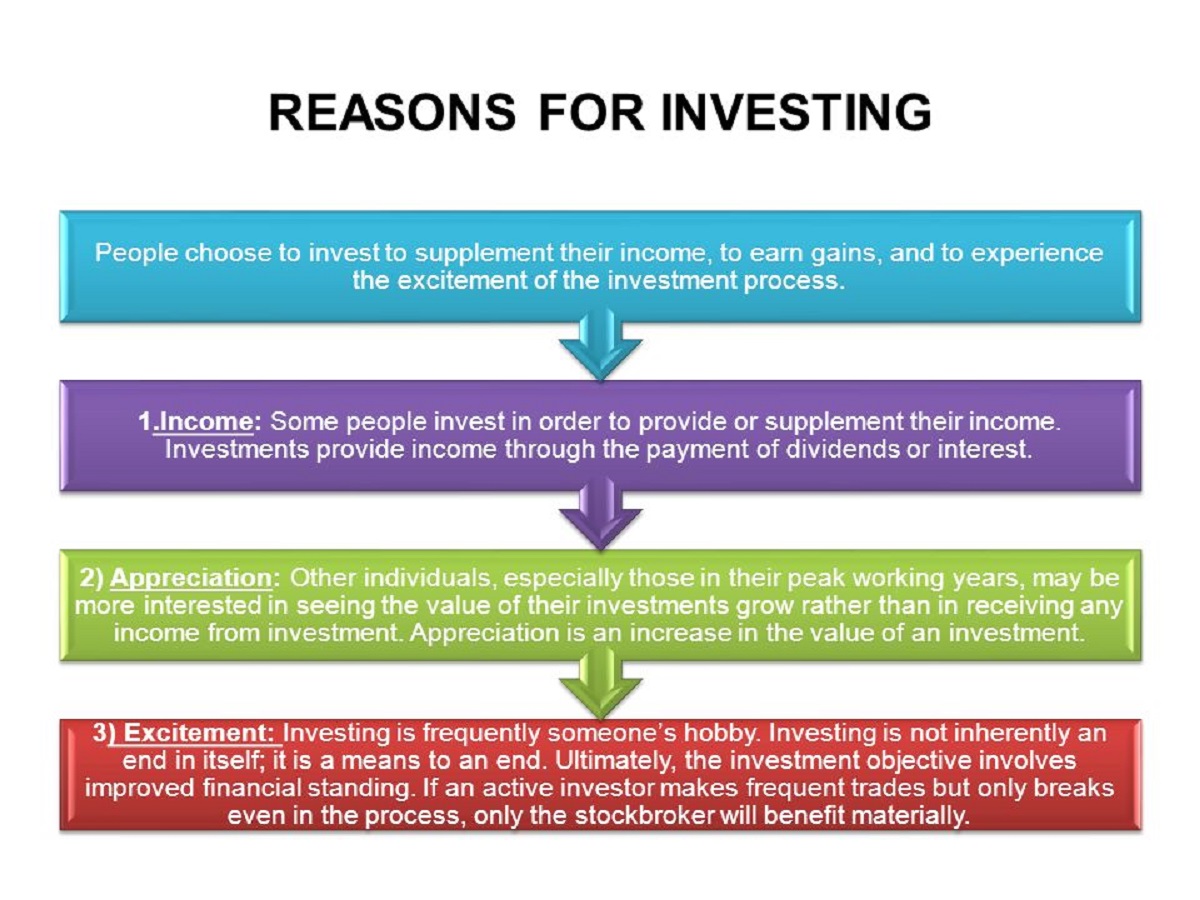Introduction
Welcome to the world of fintech, where technology and finance intersect to revolutionize the way we handle financial transactions, investments, and banking. In today’s digital age, Fintech has become a dynamic and rapidly growing sector. The combination of innovative technologies, streamlined processes, and digitization has led to its widespread adoption and significant impact on various industries.
Fintech, short for financial technology, refers to the application of technology to provide financial services and solutions. From mobile banking apps to online investment platforms, Fintech encompasses a wide range of services that aim to enhance convenience, efficiency, and accessibility for both businesses and consumers.
This article will delve into the reasons why Fintech is experiencing such remarkable growth and how it is reshaping the financial landscape. By exploring key factors such as convenience, increased competition, improved customer experiences, cost reduction, advancements in technology, integration of AI and ML, evolution of payment solutions, expansion of digital banking, blockchain technology, peer-to-peer lending platforms, and the regulatory environment, we will paint a comprehensive picture of the Fintech phenomenon.
So, why is Fintech gaining momentum at an unprecedented rate? Let’s dive deeper into these factors to understand the driving forces behind this transformative wave.
Definition of Fintech
Before we delve into the reasons why Fintech is experiencing such remarkable growth, let’s start by establishing a clear definition of what exactly Fintech is. Fintech, short for financial technology, refers to the use of advanced technology and innovation to deliver financial services and solutions in a more efficient and accessible manner.
Traditional financial institutions often face challenges in meeting the evolving needs of their customers due to outdated systems and processes. Fintech disrupts this traditional landscape by leveraging technology to enhance the speed, convenience, and cost-effectiveness of financial services. From mobile banking apps to robo-advisors, Fintech encompasses a wide range of platforms and applications that streamline financial transactions, investment management, and banking services.
One of the key features of Fintech is its emphasis on user-centricity. By leveraging technology, Fintech companies aim to provide a seamless and personalized experience for their customers. This includes features such as mobile banking apps that allow users to easily manage their finances on the go, personalized investment recommendations based on individual goals and risk appetite, and digital payment solutions that simplify transactions.
Moreover, Fintech opens up new avenues for financial inclusion. By leveraging technology, Fintech companies can reach underserved populations and provide access to financial services that were previously out of reach. This includes offering digital banking solutions for the unbanked, enabling microloans for small businesses, and facilitating cross-border payments with lower fees.
Overall, Fintech represents a transformative wave in the financial industry. Its innovative use of technology and customer-centric approach are revolutionizing the way financial services are delivered, making them more accessible, efficient, and user-friendly. As we explore the reasons behind Fintech’s growth, we will gain a more comprehensive understanding of its impact on various industries and the global economy.
Global Adoption of Fintech
The adoption of Fintech solutions has been steadily increasing around the world. From developed nations to emerging economies, businesses and individuals are embracing the benefits that Fintech brings to the table.
In developed nations, Fintech has gained traction due to its ability to meet the changing demands of tech-savvy consumers. With smartphones becoming ubiquitous and internet penetration on the rise, consumers are seeking convenient and seamless financial services. Fintech platforms offer a range of solutions, such as digital banking, online payment systems, and investment management apps, catering to the growing needs of modern consumers.
Emerging economies have also seen a significant uptake of Fintech solutions. In these regions, Fintech has become a catalyst for financial inclusion, enabling individuals and businesses to access financial services previously out of reach. Mobile wallets and digital payment solutions have provided the unbanked population with a means to store and transact money safely and conveniently. Additionally, Fintech lending platforms have filled the gap left by traditional banks, offering microloans and credit to small businesses and individuals with limited collateral.
This global adoption of Fintech is fueled by several factors. Firstly, the rise of smartphones and internet connectivity has made it easier for consumers to access Fintech applications and services. With just a few taps on their mobile devices, users can perform a wide range of financial transactions, from transferring money to managing investments.
Furthermore, the COVID-19 pandemic has accelerated the adoption of Fintech solutions. As lockdowns and social distancing measures forced physical bank branches to close, consumers turned to digital alternatives. Online banking apps, contactless payments, and virtual meetings with financial advisors became the norm. Fintech companies were at the forefront of this swift transition to the digital realm, providing seamless remote financial services.
Regulatory support has also played a crucial role in the global adoption of Fintech. Governments and regulatory bodies have recognized the potential of Fintech to drive economic growth, improve financial inclusion, and enhance consumer protection. Many countries have introduced regulations to support Fintech innovation while ensuring compliance with security and privacy standards.
Overall, the global adoption of Fintech is a testament to the growing recognition of its benefits. From developed nations to emerging economies, Fintech is reshaping the financial landscape, making financial services more accessible, efficient, and inclusive for individuals and businesses alike.
Convenience and Accessibility
One of the significant driving forces behind the growth of Fintech is the enhanced convenience and accessibility it offers to consumers and businesses alike. Traditional financial services often involved time-consuming processes and limited access, but Fintech has revolutionized the way financial transactions and services are conducted.
With the advent of mobile banking apps and online platforms, individuals can now manage their finances anytime, anywhere, using just their smartphones or computers. Whether it’s checking account balances, transferring funds, or paying bills, Fintech has made financial tasks quick and hassle-free. No more waiting in long queues at the bank or adhering to rigid banking hours – Fintech provides the freedom and flexibility to handle financial matters at one’s convenience.
Moreover, Fintech has made financial services more accessible to underserved populations, including the unbanked and underbanked. In countries where physical bank branches are scarce, mobile banking apps and digital wallets have bridged the gap, enabling individuals to store, send, and receive money securely. This increased accessibility has opened up opportunities for financial inclusion, empowering individuals with limited access to traditional banking services to participate in the formal economy.
Another aspect of convenience and accessibility offered by Fintech is the ability to aggregate and streamline financial information. Through personal finance management apps and platforms, users can consolidate information from various accounts and financial institutions in one place. This allows for a holistic view of their financial health, making it easier to track expenses, set budgets, and plan for the future.
Fintech has also made investing more accessible to the masses. Traditional investment avenues were often limited to those with significant capital or financial expertise. However, Fintech platforms, such as robo-advisors and investment apps, have made investing simpler and more affordable. Users can start with smaller amounts, choose from diverse investment options, and receive personalized recommendations based on their goals and risk appetite.
Overall, the convenience and accessibility offered by Fintech have transformed the way individuals and businesses handle their financial matters. From mobile banking to digital wallets and online investment platforms, Fintech has made financial services more convenient, accessible, and user-friendly, empowering individuals with greater control over their finances.
Increased Competition
The rise of Fintech has led to increased competition in the financial industry. Traditional banks and financial institutions are no longer the only players in the market, as Fintech startups and tech giants have entered the scene with innovative solutions and services.
Previously, individuals and businesses had limited options when it came to financial services. They had to rely on a handful of traditional banks, often facing high fees, rigid policies, and slow processes. However, with the emergence of Fintech, consumers now have a wider range of choices. Fintech companies offer competitive interest rates, lower fees, and more flexible terms, enticing customers away from traditional banks.
This increased competition has forced traditional financial institutions to adapt and innovate. To stay relevant, many banks have started partnering with Fintech companies or developing their own digital platforms to provide more accessible and customer-friendly services. This competition has driven a digital transformation within the financial industry, benefiting consumers by improving the quality and convenience of financial services.
Moreover, Fintech has facilitated the growth of challenger banks – fully digital banks that operate without physical branches. These banks offer agile and user-friendly platforms, often coupled with personalized features and rewards programs. By challenging the traditional banking model, challenger banks bring more choices and options to consumers, putting pressure on traditional banks to improve their offerings.
Another area where increased competition is evident is in the lending space. Fintech companies have introduced peer-to-peer lending platforms, allowing individuals and businesses to bypass traditional banks and borrow directly from investors. These platforms offer faster loan approval processes, competitive interest rates, and a seamless online experience, disrupting the traditional lending landscape. Traditional banks have had to innovate to keep up, introducing new loan products and streamlining their loan application processes.
The increased competition brought by Fintech has ultimately been beneficial for consumers. They now have access to a wider range of financial services, with more competitive rates and better customer experience. Traditional banks are being pushed to improve their offerings, leading to enhanced services, improved digital platforms, and more customer-centric approaches.
Overall, the increased competition in the financial industry spurred by Fintech has brought about positive changes for consumers. The availability of more choices, better rates, and improved services has empowered individuals and businesses to make informed decisions and demand better financial solutions.
Improved Customer Experiences
Fintech has greatly enhanced customer experiences in the realm of financial services. Traditional banking processes often involved lengthy paperwork, bureaucratic hurdles, and limited accessibility. However, Fintech has transformed the way customers interact with financial institutions, making the entire experience more seamless, personalized, and user-friendly.
One of the primary ways in which Fintech improves customer experiences is by providing a user-centric approach. Fintech companies prioritize the needs and preferences of their customers, offering intuitive interfaces, personalized recommendations, and tailored financial solutions. Through data analysis and algorithms, Fintech platforms can understand individual user behavior, preferences, and goals, delivering a customized experience that meets their specific financial needs.
Additionally, Fintech has simplified and expedited many financial processes. Opening a bank account, applying for a loan, or transferring funds can now be done with just a few clicks. By digitizing these processes and eliminating paperwork, Fintech platforms reduce the time and effort required from customers, enhancing overall satisfaction and convenience.
Fintech has also revolutionized the way customer support is provided. Traditional banks typically operate during limited hours, making it challenging for customers to seek assistance or resolve queries outside of these hours. However, Fintech platforms often offer 24/7 customer support, enabling users to access help whenever they need it. Through instant messaging or chatbot services, users can receive prompt assistance, making their overall experience more efficient and pleasant.
In addition, Fintech has introduced innovative tools that empower customers to take control of their finances. Personal finance management apps, for example, allow users to visualize and analyze their spending habits, set budgeting goals, and track progress. Investment management platforms provide real-time updates, educational resources, and insights to help users make informed investment decisions. These tools enhance financial literacy and empower users to make smarter financial choices.
Furthermore, Fintech has improved the security of financial transactions and accounts. Innovations such as biometric authentication, multi-factor authentication, and encryption technologies ensure robust security measures, giving customers peace of mind when conducting financial activities online. Fintech platforms prioritize cybersecurity and continuously update their systems to protect customer data from potential cyber threats.
Overall, Fintech has revolutionized customer experiences in the financial industry. By focusing on user-centricity, digitizing processes, providing 24/7 customer support, offering innovative tools, and prioritizing security, Fintech platforms have significantly improved the way customers interact with financial services. These enhancements have led to higher customer satisfaction, increased convenience, and a more personalized approach to financial management.
Cost Reduction
Fintech has played a pivotal role in reducing costs associated with financial services, benefitting both businesses and consumers. Traditional financial institutions often have high overhead costs, which are ultimately passed on to the customers in the form of fees and charges. However, Fintech has introduced innovative technologies and streamlined processes, leading to substantial cost savings.
One area where Fintech has reduced costs is in banking operations. Traditional banks require physical branches, extensive staff, and complex infrastructure, resulting in significant operational expenses. Fintech platforms, on the other hand, operate digitally, eliminating the need for physical branches and reducing overhead costs. This allows Fintech companies to offer more competitive interest rates, lower fees, and in some cases, even fee-free banking services.
In addition to operational cost savings, Fintech has enabled cost-effective payment solutions. Online payment platforms and mobile wallets have significantly reduced the reliance on physical cash and expensive card processing systems. Fintech payment solutions offer secure and speedy transactions, often at a fraction of the cost compared to traditional payment methods. This cost reduction benefits businesses by lowering transaction fees, and ultimately, consumers by enabling seamless and affordable payment experiences.
Moreover, Fintech has impacted the lending landscape by increasing access to capital and reducing borrowing costs. Traditional banks rely on credit scores, collateral, and extensive paperwork for loan approvals, making it challenging for some individuals and small businesses to secure financing. Fintech lending platforms utilize innovative risk assessment models, alternative data sources, and automated processes to evaluate creditworthiness. This reduces the cost and time involved in loan approvals, leading to more affordable lending options and increased access to capital.
Additionally, Fintech has facilitated cost-effective investing. Traditional investment options, such as mutual funds and financial advisors, often come with high fees and minimum investment requirements. Fintech platforms, such as robo-advisors, offer low-cost investment management services that utilize algorithms and automation to provide personalized investment strategies. This reduces the need for costly human advisors, making investing more accessible and affordable to a wider range of individuals.
Furthermore, Fintech has introduced cost-effective cross-border payment solutions. Traditional international wire transfers often involve high fees and lengthy processing times. Fintech platforms leverage blockchain technology and digital currencies to facilitate faster, cheaper, and more transparent cross-border transactions. This not only reduces costs for businesses engaged in global trade but also benefits individuals sending money to family or friends abroad.
Overall, Fintech has significantly reduced costs associated with financial services. By streamlining processes, eliminating physical infrastructure, introducing cost-effective payment solutions, and offering innovative lending and investment options, Fintech has disrupted traditional banking models and brought cost savings to businesses and consumers alike.
Advancements in Technology
The rapid advancements in technology have been a driving force behind the growth and success of Fintech. From artificial intelligence to big data analytics and blockchain, technological innovations have revolutionized the financial industry, enabling Fintech companies to offer innovative and efficient solutions.
One of the key technological advancements in Fintech is the use of artificial intelligence (AI) and machine learning (ML). AI-powered algorithms can analyze vast amounts of data and make real-time decisions based on patterns and trends. This has transformed various aspects of financial services, such as risk assessment, fraud detection, and personalized customer experiences. From chatbot assistants to robo-advisors, AI and ML have automated processes, increased efficiency, and improved the accuracy of financial decision-making.
Furthermore, big data analytics has played a significant role in the growth of Fintech. The ability to collect, analyze, and derive insights from enormous volumes of data has enabled Fintech companies to offer personalized services and better understand customer behaviors. By leveraging big data, Fintech platforms can provide tailored investment recommendations, targeted marketing campaigns, and more accurate risk assessments, enhancing the overall customer experience.
Blockchain technology, originally developed for cryptocurrencies like Bitcoin, has found its application in Fintech beyond digital currencies. Blockchain offers a decentralized and tamper-proof system for recording and verifying transactions. This technology has introduced greater transparency, security, and efficiency in areas such as payments, trade finance, and supply chain management. By eliminating intermediaries and reducing transaction costs, blockchain has the potential to revolutionize the way financial transactions are conducted.
Advancements in technology have also fueled the growth of mobile banking. As smartphones have become an integral part of our lives, Fintech companies have developed mobile banking apps that allow users to perform a wide range of financial activities on their smartphones. Through intuitive interfaces, biometric authentication, and seamless integrations with other financial platforms, mobile banking has increased accessibility and convenience for individuals across the globe.
Moreover, cloud computing has played a crucial role in the scalability and cost-effectiveness of Fintech solutions. By utilizing cloud infrastructure, Fintech companies can store and process massive amounts of data, scale their operations as needed, and reduce infrastructure costs. Cloud computing also enables real-time updates, seamless integration with other systems, and enhanced data security, ensuring a smooth and efficient user experience.
Overall, the advancements in technology have been instrumental in driving the rapid growth and innovation within the Fintech industry. From AI and ML to big data analytics, blockchain, mobile banking, and cloud computing, these technological advancements have transformed financial services, delivering greater efficiency, convenience, security, and personalized experiences to customers.
Integration of Artificial Intelligence and Machine Learning
The integration of artificial intelligence (AI) and machine learning (ML) has been a game-changer in the realm of Fintech. These technologies have revolutionized the way financial services are delivered, enhancing efficiency, personalization, and decision-making processes.
AI and ML algorithms have the ability to process vast amounts of data, identify patterns, and make predictions. In the finance industry, this technology is utilized for a variety of purposes, including risk assessment, fraud detection, customer service, and investment management.
One of the key applications of AI and ML in Fintech is in risk assessment and lending. Traditional banks rely on manual processes and subjective evaluations to assess creditworthiness, often resulting in delays and inefficiencies. AI and ML algorithms, on the other hand, can analyze a wide range of data points – from credit history to social media activity – to generate more accurate and objective risk assessments. This leads to faster loan approvals, reduced default rates, and increased access to credit for individuals and businesses.
Furthermore, AI-powered chatbots and virtual assistants have transformed customer service in the financial industry. These intelligent systems can provide personalized support, answer customer queries, and guide users through various financial processes. By leveraging natural language processing and machine learning, these chatbots can understand and respond to customer interactions in real-time, delivering a seamless and efficient customer experience.
ML algorithms are also utilized in investment management, commonly known as robo-advisors. These digital platforms leverage AI to provide automated investment advice based on individual goals, risk tolerance, and market conditions. By analyzing historical and real-time market data, robo-advisors can generate customized investment portfolios and rebalance them as needed. This offers individuals affordable and accessible investment opportunities, reducing the need for high-cost human financial advisors.
Moreover, AI and ML are instrumental in fraud detection and prevention. These technologies can analyze vast amounts of transaction data, identify suspicious patterns, and flag potential fraudulent activities in real-time. By automating the detection process, Fintech companies can minimize financial losses and protect customer accounts from fraudulent activities.
The integration of AI and ML in Fintech also contributes to continuous improvement and optimization. These technologies can learn from data over time, enabling algorithms to adapt and improve their performance. By analyzing user behaviors and feedback, Fintech platforms can refine their recommendations, streamline processes, and enhance overall user experience.
Overall, the integration of AI and ML has transformed the financial landscape, enabling Fintech companies to offer more efficient, personalized, and accurate financial services. From risk assessment and customer service to investment management and fraud detection, AI and ML technologies have revolutionized the way financial services are delivered, empowering individuals and businesses in their financial journeys.
Evolution of Payment Solutions
The evolution of payment solutions has been a significant aspect of the Fintech revolution. With advancements in technology and changing consumer preferences, traditional payment methods have given way to more efficient, secure, and convenient alternatives.
One of the key developments in payment solutions is the rise of digital wallets. Digital wallets enable users to store their payment card details electronically and make contactless payments using their smartphones or other devices. With just a tap or scan, consumers can complete transactions swiftly, eliminating the need for physical cards or cash. This not only provides convenience but also enhances security by reducing the risk of lost or stolen cards.
Furthermore, peer-to-peer (P2P) payment platforms have gained popularity in recent years. These platforms allow individuals to transfer funds directly to each other, bypassing the need for traditional intermediaries such as banks. P2P payment solutions offer speed, ease, and lower transaction fees compared to traditional methods. Users can split bills, send money to friends and family, and even make payments to merchants without the need for physical cash or checks.
In addition to digital wallets and P2P payments, there has been a significant shift towards contactless payment technology. Near Field Communication (NFC) and Quick Response (QR) code-based payments have become increasingly prevalent, allowing users to make payments by simply tapping their cards or scanning QR codes. Contactless payments offer speed and convenience, particularly in situations where a quick transaction is desirable, such as at retail stores, public transport, or events.
The emergence of cryptocurrency has also influenced the evolution of payment solutions. Cryptocurrencies, such as Bitcoin and Ethereum, are digital currencies based on blockchain technology. While still in the early stages of adoption, cryptocurrencies offer benefits such as faster transactions, lower fees, and increased security compared to traditional fiat currencies. Fintech companies have developed platforms and wallets that enable cryptocurrency transactions, paving the way for a potential revolution in cross-border payments and remittances.
Moreover, Fintech has introduced aggregation platforms that consolidate multiple payment methods into a single wallet or app. These platforms allow users to link their bank accounts, credit cards, digital wallets, and loyalty cards, simplifying the payment process and providing a unified view of their financial transactions. Such aggregation platforms offer convenience and a centralized hub for managing various payment methods and financial activities.
Another significant advancement in payment solutions is the integration of biometric authentication. Fingerprint and facial recognition technologies enable secure and convenient payment authorization, reducing the reliance on PINs or passwords. Biometric authentication enhances security and enhances the user experience by simplifying the payment process, particularly for mobile payments and digital wallet transactions.
Overall, the evolution of payment solutions has transformed the way we transact and interact with money. From digital wallets and P2P payments to contactless technology and the integration of biometrics, Fintech has made payments faster, more secure, and more convenient, improving the overall experience for consumers and businesses.
Expansion of Digital Banking
The expansion of digital banking has been a significant trend within the Fintech industry, revolutionizing the way individuals manage their finances and interact with financial institutions. Digital banking encompasses a range of online and mobile-based services provided by banks and Fintech companies, offering convenience, accessibility, and enhanced financial management capabilities.
One of the key drivers of the expansion of digital banking is the increased demand for convenient and secure banking services. Digital banking platforms enable individuals to access their bank accounts, make transactions, and manage their finances from the comfort of their own devices, eliminating the need to visit physical bank branches or ATMs. With just a few taps on a smartphone or clicks on a computer, users can check account balances, transfer funds, pay bills, and even apply for loans or mortgages. The 24/7 availability of digital banking services ensures that customers can manage their finances at any time, from anywhere.
Moreover, digital banking has expanded the range of services offered to customers. Traditional banking services have been augmented with features such as real-time transaction alerts, spending categorization, financial planning tools, and personalized recommendations. These additional tools empower individuals to better understand their finances, set goals, and make informed financial decisions. Through data analytics and AI-powered algorithms, digital banking platforms can provide personalized insights and recommendations tailored to each user’s unique financial needs and aspirations.
Another notable aspect of the expansion of digital banking is the increased focus on financial inclusion. Through digital banking platforms, access to banking services has become more widespread, particularly in areas where physical bank branches are scarce or inaccessible. Digital banking has enabled the unbanked and underbanked populations to gain access to basic financial services, such as savings accounts and payment platforms. Mobile banking apps can be easily downloaded on smartphones, enabling individuals in remote areas to perform essential banking functions without the need for physical proximity to a bank branch.
Fintech companies specializing in digital banking have also reshaped the user experience. They prioritize user-friendly interfaces, simplified processes, and intuitive design to ensure a seamless and enjoyable customer journey. The customization and personalization features allow users to tailor their digital banking experience according to their preferences, making it more engaging and user-centric.
The expansion of digital banking has also been fueled by partnerships between traditional banks and Fintech companies. Many banks have recognized the need to adapt and embrace digital transformation to meet the evolving demands of consumers. This has led to collaborations with Fintech firms to leverage their technological expertise and innovative solutions. Through these partnerships, banks have been able to integrate digital banking features and services into their existing infrastructure, benefiting from the advancements in Fintech while maintaining their established customer base and trust.
Overall, the expansion of digital banking has reshaped the banking landscape, providing consumers with greater convenience, accessibility, and financial management capabilities. With the rising demand for digital banking services, individuals can now manage their finances efficiently, access a wider range of services, and participate in the formal banking system, ultimately promoting financial inclusion and empowering individuals in their financial journeys.
Blockchain Technology
Blockchain technology has emerged as a groundbreaking innovation with transformative potential, not only in the realm of cryptocurrencies but also in various other industries, including finance. Blockchain is a decentralized and transparent ledger that records transactions across multiple computers, offering enhanced security, efficiency, and trust in financial transactions.
One of the key advantages of blockchain technology is its ability to provide immutability and transparency. Each transaction recorded on the blockchain is timestamped, encrypted, and linked to the previous transaction, creating a chain of data blocks. This tamper-proof nature of blockchain ensures the integrity of financial records and mitigates the risk of fraud or manipulation.
Blockchain has the potential to revolutionize payment systems, particularly in terms of cross-border transactions. Traditional methods often involve multiple intermediaries, lengthy settlement times, and high transaction fees. Blockchain-based payment systems can facilitate faster and more cost-effective cross-border payments by eliminating intermediaries, reducing settlement times, and decreasing transaction costs.
Moreover, blockchain technology offers significant potential in reducing fraud and enhancing security in financial transactions. By utilizing cryptographic algorithms and decentralized networks, blockchain ensures that data is securely stored, preventing unauthorized access or alteration. This secures the financial ecosystem and reduces the risk of fraudulent activities, offering greater trust and confidence to businesses and individuals.
Another area where blockchain technology is making strides is in trade finance and supply chain management. Blockchain enables the creation of a shared and immutable record of transactions, facilitating transparency and traceability across the supply chain. This enhances efficiency by reducing paperwork, streamlining processes, and providing real-time visibility into the movement of goods and funds.
Additionally, blockchain technology has the potential to transform the concept of identity verification and KYC (Know Your Customer) processes. By creating a secure and decentralized identity system, individuals can have better control over their personal data while organizations can streamline and simplify customer onboarding processes. This reduces the burden of identity verification and enhances privacy and security.
Furthermore, blockchain-based smart contracts have the potential to revolutionize the way financial agreements and contracts are executed. Smart contracts are self-executing contracts with predefined rules and conditions that automatically execute once the conditions are met. This eliminates the need for intermediaries, reduces transaction costs, and improves the efficiency of contract management, ensuring trust and accuracy in financial agreements.
Although still in the early stages of adoption, blockchain technology has shown immense potential to transform the financial industry. From secure and efficient payment systems to transparent supply chain management, blockchain offers solutions that can streamline processes, reduce costs, enhance security, and foster trust among participants in the financial ecosystem.
Rise of Peer-to-Peer Lending Platforms
The rise of peer-to-peer (P2P) lending platforms has revolutionized the way individuals and businesses access financing. By connecting borrowers directly with lenders, P2P lending platforms have disrupted the traditional lending landscape, offering increased accessibility, transparency, and efficiency in the borrowing and lending process.
One of the key advantages of P2P lending platforms is the accessibility they provide to borrowers. Traditional lending institutions often have strict criteria and lengthy approval processes, making it difficult for some individuals and small businesses to secure loans. P2P lending platforms offer a more inclusive approach, allowing borrowers with varying creditworthiness to access funds. By leveraging alternative data points and utilizing innovative risk assessment models, these platforms are able to evaluate borrowers’ creditworthiness more comprehensively, providing them with opportunities that would otherwise be unavailable.
Furthermore, P2P lending platforms offer competitive interest rates compared to traditional banks. By cutting out intermediaries and operating online, these platforms have lower overhead costs, allowing them to pass on the cost savings to borrowers in the form of more favorable interest rates. This benefits borrowers by reducing the cost of borrowing and allows lenders to potentially earn higher returns on their investments compared to traditional fixed-income investment options.
P2P lending platforms also provide an efficient and streamlined lending process. Borrowers can create profiles, submit loan applications, and receive funding decisions quickly, often within a matter of days. This eliminates the lengthy wait times associated with traditional loan approvals, enabling borrowers to access funds in a timely manner to meet their financial needs.
For lenders, P2P lending platforms offer opportunities to diversify their investment portfolios and earn attractive returns. By investing in loans across different industries and risk levels, lenders can spread their risk and potentially achieve higher returns compared to traditional investment options. Additionally, lenders have the flexibility to choose specific loan opportunities based on their preferences and risk tolerance, allowing them to have more control over their investments.
P2P lending platforms also prioritize transparency in the lending process. Borrowers and lenders have access to detailed information about the loan terms, interest rates, and borrower profiles. This transparency fosters trust and enables informed decision-making on both sides of the lending transaction. Additionally, P2P lending platforms often provide user reviews and ratings, allowing lenders to assess the creditworthiness and reliability of borrowers, further enhancing transparency and risk assessment.
Overall, the rise of P2P lending platforms has democratized access to finance, providing borrowers with more opportunities and lenders with alternative investment options. By offering accessibility, competitive interest rates, streamlined processes, and transparency, these platforms have reshaped the lending landscape, providing a viable alternative to traditional financial institutions and fostering financial inclusion.

























